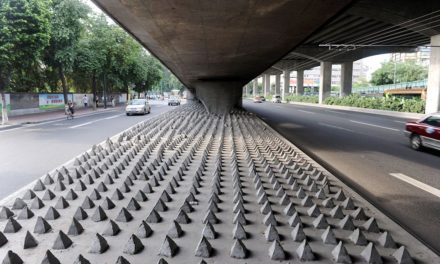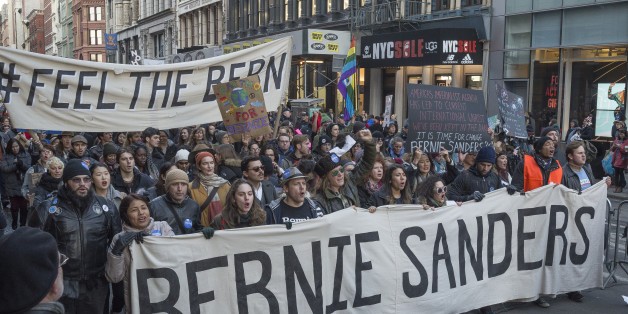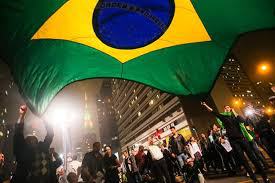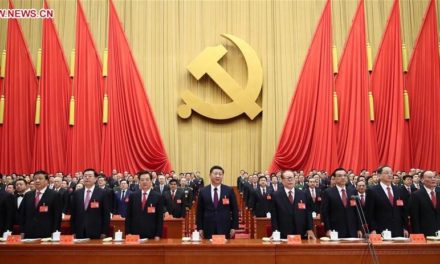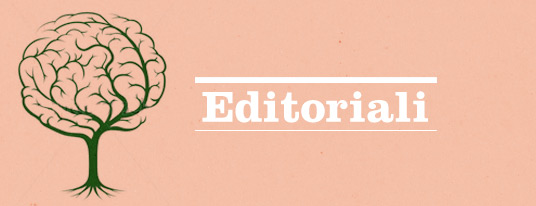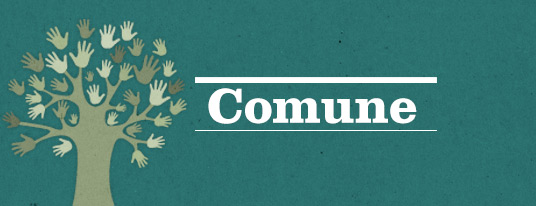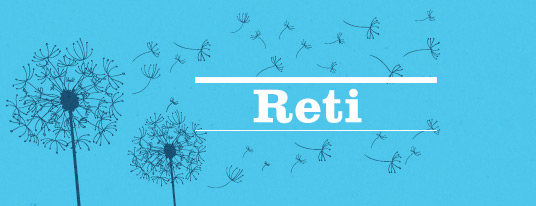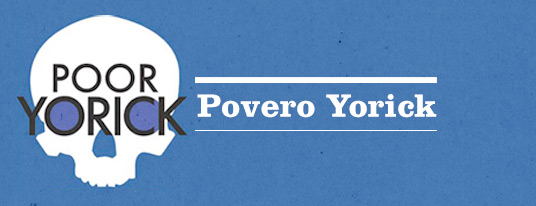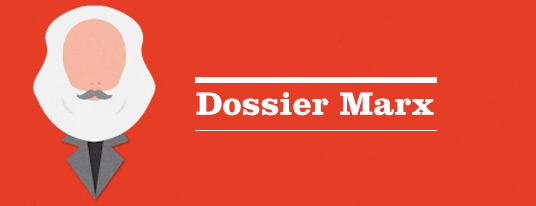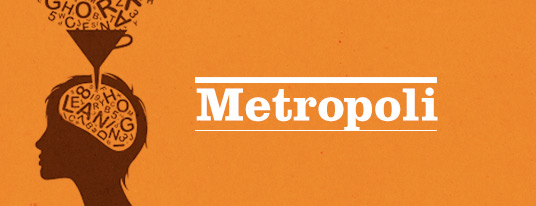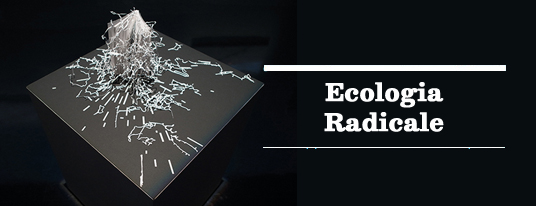di MARIA CHEHONDSKIH
Pubblichiamo nel Dossier Mondo quattro articoli in inglese che narrano la composizione delle lotte in Russia dal 2011 al 2013 e come esse si siano scontrate con la riforma dello Stato e delle strutture comunicative del Paese sotto la ferrea linea di Putin. Molto interessanti sono le piste che in questi articoli emergono relativamente alle nuove forme di produzione di soggettività che in queste lotte si sono date. Gli articoli sono stati pubblicati sulla rivista americana The South Atlantic Quarterly (113:1, Winter 2014) nella sezione Against the Day in un dossier comune dal titolo “Democracy Has Become Unmanageable!” The Russian Protests in a Global Context. [EuroNomade]
The Dynamics of the Anti-Putin Protest: From Illegality to Legality and Back
The grassroots movement against Vladimir Putin erupted in Russia in 2011. During this period, the agenda, goals, and dynamics of the movement have changed a great deal. In this essay I will look at the class composition of the anti-Putin protest and at its dominant political form—mass rallies, which were represented in public and in the media by the coalition of the oppositional leaders.1 The question of why people went to the streets will be connected here with who they are and what kind of political and life experi- ences they have had. The liberal agenda of fair elections and democracy, which is seen as the main slogan of the movement, should be reconsidered through an analysis of the mass depoliticization of post-Soviet society and a critique of the mainstream ideologies that have promoted liberal and neo- liberal values over the last twenty years. In other words, I would like to dis- cuss the contradictions between the constructed political form of the protest and the class background of the ordinary participants of the movement.
Let us look first at the political form of the protest and its chronology. The movement began in Moscow as a splash of discontent against fraud in the parliamentary elections of 2011, when political activists and youth spon- taneously spilled out onto the streets in illegal marches; within two weeks, the protests had spread to all the big Russian cities. According to the opposi- tion press, the seven biggest rallies of 2011–2012 drew between 35,000 and 100,000 people in Moscow, as well as thousands of people in the provinces. Gradually, the political actions developed from quickly organized meetings, which were brutally attacked by the police, into “legal rallies” planned by a loose coalition of liberals, leftists, and nationalists, who negotiated with the authorities on behalf of the protesters and began to represent the movement to officials and the media. As the movement began to grow, the self-proclaimed leading coalition was joined by media figures, pop stars, and former estab- lishment politicians who also redefined themselves as “anti-Putin” protest- ers. At the same time, ordinary participants in the demonstrations, includ- ing people from a range of different professions and from various grassroots activists groups, began to play the role of “the masses” to a new assemblage of leaders. The movement’s main political demand was a call for new elec- tions, but its adopted slogan—“for fair elections”—concealed the multiplic- ity and contradictions within this improvised coalition.
This heterogeneous political body remained a consistent feature of the protest movement until Putin won the presidential election in May 5, 2012. After that, the demonstrations slowly shifted toward more concrete demands and started to discuss particular cases of corruption, injustice, and political repression, as well as social issues. The turning point was the demonstration on May 6, 2012, which was linked to Putin’s inauguration the next day. The May 6 demonstration was the seventh mass rally that was legally sanctioned to take place on Bolotnaya Square in Moscow. This time, however, the police suddenly changed tactics and blocked the way to Bolotnaya in the backstreets and along the riverfront. This increased police activity provoked tensions and clashes, as the obstructed protesters were forced to break through the police cordon. The shift toward more resolute action and resistance to the police occurred in reaction to these contingent circumstances, but it also was connected with an increased politicization among the protesters. The movement had by that point already begun to understand that participating in demonstrations after Putin’s presidential victory was an increasingly radical political gesture, as the police were obviously receiving signals to suppress all protests. The people were not ready to give back their hard-won right to protest on the streets, in part because they finally had found a legitimate place to express their anger and dissatisfaction, but also—and even more important—because they had begun to recognize each other as members of one society. Having discov- ered that they were a part of a complex system full of contradictions and distinctions, they began at last to conceive of society as something signifi- cant and valuable.
The demonstration on May 6 ended with violence and mass arrests: according to the police report, 436 people were arrested in connection with the protest. Despite brutal police efforts to intimidate and disperse the pro- testers, people did not leave the streets. A small group continued to migrate from one place to another, trying to prolong the action and stay on the streets until the authorities agreed to reconsider the results of the presidential election. During the following week, protesters attempted to occupy differ- ent squares, parks, and public gardens. As soon as they settled somewhere, however, the police would find and evict them, arresting many activists in the process. The cycle continued as those arrested were replaced by new activists, until finally the police forces refused to chase protesters. They worked without a break the entire week and finally called for days off and bonuses for extra work.
During those days of unrest, a small group of protesters occupied a square in downtown Moscow near a monument to the Kazakh poet Abai Kunanbaev (Qunanbaiuli). There they set up a camp that came to be known as Occupy Abai. Initially the camp consisted of activists and young people, a group similar to those who had first participated in the illegal marches of December 2011. Very soon, however, thousands of people joined the illegal camp. Many of them became active participants in assemblies, organized various research groups, and helped run the everyday life of the camp. Previ- ously unknown or ignored political forces marginalized on the political spec- trum of the opposition became visible to the huge mass of people joining the camp. All kinds of activists—from antifascists, anarchists, and radical left- ists to liberals (old-style “democrats” who emerged during Perestroika), human rights activists, and even nationalists—found themselves defined as anti-Putin organizers and demonstrators. Their shared oppositional stance was the only principle uniting the many and varied political forces that came together in Occupy Abai. For precisely this reason, the artificial unanimity connecting the groups quickly collapsed. Each time someone touched on concrete political, economic, or social questions, a “struggle for recognition” from the ordinary participants of the camp erupted.
During the time that Occupy Abai was operational, leftist organiza- tions and groups became visible and significant political actors for the first time in post-Soviet Russia. Occupy Abai challenged traditional political forms. Liberals and nationalists were puzzled at the nonhierarchical self- organization governing the Occupy Abai camp, since politically they did not share the goals of communal and municipal forms of life. Both fac- tions became obsessed by the fact that the protesters seemed to forget about the leaders of the earlier legal rallies. The leftist activists who orga- nized the first assemblies and “human microphones” became a more impor- tant and vital part of the occupation than other political forces.
The assemblies offered many participants their first experience of public discussion about key political and social problems: those involved gained more self-confidence as they saw their voices and decisions influ- ence the life of the camp and its agenda. The leftists arranged debates, dis- cussions, and lectures with intellectuals, activists, artists, and other cultural producers. While some young members of the opposition had earlier fluc- tuated among different political forces and discourses, they now began to commit themselves to leftist organizations and quickly became important and visible protest figures. The previously ignored and neglected leftist dis- course even became fashionable among the protesting group.
Occupy Abai existed for only a week before it was destroyed by police officers, who returned to work at the end of their strike. Within a month after the camp was closed, the authorities created the so-called Investiga- tion Committee to inquire into the “disorders” related to the May 6 demon- stration. Between May 2012 and May 2013, twenty-eight more people have been arrested. They currently await trial and most likely will be charged as “extremists.” Held in a pretrial detention center, they expect prison terms of four to ten years for the organization of mass riots and “antistate activ- ity.” Unsurprisingly, there are many leftist and antifascist activists among the arrested. In conjunction with the wave of repressions against the May 6 demonstrations, a declaration outlawing and threatening to close a num- ber of leftist organizations, despite the fact that they were not officially reg- istered. The fallout of the May 6 demonstration and the Occupy Abai camp won the Left new proponents, but the protest movement as a whole was dismantled and people were again divided into small groups.
The events of May 2012 changed the focus of the opposition move- ment from a demand for new elections to a defensive position. Since then, the movement has primarily protested against repressions, against con- crete cases of violence and human rights abuse, and against newly intro- duced antidemocratic and anticonstitutional laws. The struggle continued to localize in the form of self-organized initiatives, including the establish- ment of an environmental protest camp against the new forest road in the town of Zhukovsky, a mass movement of volunteers to support flood victims in the city of Krymsk, a student struggle against the commercialization of high schools and budget cuts in the education system, and the creation of a new union for university teachers. Thus, the anti-Putin movement has passed through a certain cycle. From mass protests against election fraud and demands for new elections, it has become more focused on concrete struggles. In other words, it has drifted from demands of legality to a more active and militant position. If at the beginning the movement mainly took the form of traditional rallies, accompanied by affirmative speeches by opposition leaders, later it shifted toward initiatives organized by the pro- testers themselves.
Nevertheless, one can now see that after Putin’s inauguration, the lib- eral agenda became enmeshed in the politics of “small things” and human rights struggles far removed from big political projects, discussions about alternative models of society, and radical anticapitalist demands. Critiques of this kind come both from leftist organizations that maintain the idea of a middle-class revolt and from nationalists, who consider the protesters the indecisive face of an urban intelligentsia incapable of radical action. Both cri- tiques support the liberals’ understanding that the protesting masses are their potential electorate. First, the liberal doctrine of middle-class revolt cor- responds to the ideology of “reelection” (and thus would affect only a small correction of the political system). Second, liberals contrasted the passivity and “barbarism” of the provincial working class that remained generally pro-Putin (or politically neutral) during the protests to the activity of the anti-Putin urban citizens, whom they therefore called the “educated middle class.” Finally, the protesters themselves, in their demands for freedom, order, and legality in the country—as they put it in their slogans, they sought a “peaceful transition, not revolution”—espoused views that correlate to a moderate political position.
However, the class composition of the protest was always diverse. We should really ask what stands behind the ideological constructions of “legality” and “liberal freedom.” How does the varying class composition correspond to the asocial and formal demands of reelection and the wide- spread belief in representative democracy, which is thought capable of solv- ing all the problems in the country?
The Languages of Depoliticization:
Official Propaganda versus the Liberal Opposition Mainstream
For the majority of the 2011–2012 protesters, street politics was a new expe- rience previously associated with a “subculture” of radical activists. The very language and modes of behavior of political activism were initially deter- rents for most participants. Post-Soviet citizens did not participate in any political discussions and activities after the 1990s. Street politics under the Putin regime fell into the category of “extremism” and, for most citizens, seemed risky and pointless. The fear of street protests had roots in the vio- lence that occurred in 1993 as well, when during a rebellion against Boris Yeltsin’s neoliberal reforms, tanks attacked Parliament and several hundred participants were killed. This history created the breeding ground for the mass depoliticization of a people disappointed in both the results of the 1990s reforms and in any form of participation in the country’s political life. Instead, politics became synonymous with foul plots between oligarchic groups, who cynically used slogans for short-term tactical victories and their own enrichment. To make the 2011–2012 demonstrations attractive to gener- ally apolitical newcomers, slogans like, “We are here for peaceful transition, not for revolution!” promised peaceful protests. Protesters posted on Face- book instructions aimed at preventing possible “provocations” in the upcom- ing meetings. Many people, who probably took to the streets for the first time in their lives, strove to show the “peaceful and friendly” atmosphere of the rallies, as opposed to the provocative style of radical political activists.2
Mistrust of any form of political involvement is another legacy of the mass depoliticization that occurred in the 1990s. From the depoliticized per- spective, taking this or that political position means sharing this or that political jargon and joining a group to take action in its name and on behalf of its common beliefs. But what if there is no belief, and all forms of political jargon are understood as a formal, affirmative, and bureaucratic language that produces violence and new machines of power? Moreover, during the apolitical and stagnant decade of Putin’s “oil euphoria” of the 2000s, Rus- sian citizens stopped even discerning the differences between political views: political forces from the Left to the Right became formal operators without meaning. Thus, Left and Right were integrated into an imagined unity, drawing on a long-standing “tradition” established by late-Soviet dissidents, who associated the Left with Stalinism and “totalitarianism” and hence the Left became indistinguishable from the Right—along with nationalism, authoritarianism, and even fascism. In this sense, post-Soviet society shares the notorious “postmodernist” relativism of the 1980s and tends to under- stand any political language as purely ideological.
The people seemed to recognize only two political languages: the lan- guage of the liberal opposition and the language of the state-controlled media. Let us look first at the liberal opposition, which received support from various establishment politicians and big businesses, as well as from the durable legacy of late-Soviet dissidence and human rights work. Over the last twenty years, the liberal opposition media has been reiterating (with minor variations) a set of mantras about Western democracy and wild East- ern feudalism; it has lobbied for capitalism with a human face and bemoaned traditional Russian authoritarianism. Part of this discourse rests on a quasi- religious belief in the free market and the importance of privatization. To justify this belief, leaders of the liberal intelligentsia created various phantas- magoric theories about the nature of the Russian state based on a bizarre mixture of conservative, postmodern, and neoliberal theories. Another cor- nerstone of this discourse is a mistrust of established political definitions, arguments, and critical intellectual traditions, which goes hand in hand with a misreading of key twentieth-century events. From this perspective, Putin not only represents a continuation of the Soviet Union in the form of a paternalist and an oppressive state and power apparatus, but also an inter- ruption of the transition to capitalism that began in the 1990s.3
In this framework, any kind of social and leftist rhetoric is under- stood as a regression to the Soviet past. The ideal model of society for the liberal opposition remains very close to nineteenth-century liberalism and its contract-based relationships between free individuals and the rule of law. “Legality” is contrasted, on the one hand, with practices of the ruling regime, which is believed to be corrupt and governed by quasi-mafia rela- tionships; on the other hand, “legality” is wielded against the supposedly destructive spirit of radical political projects, since they break the law— which must be held sacred even if it does not work and has been corrupted under the current regime. Once again, claiming to want “not revolution, but a peaceful transition” perfectly captures the heart of the liberal opposition stance. An ideal anti-Putin liberal activist would be honest, law-abiding, objective, and unbiased.
The second kind of political language familiar to the Russian people is that of the state-controlled media (represented first and foremost by the main television channels), which produce a dense field of ideological mes- sages. These media outlets propagate the populist ideas of stability and man- aged democracy that were created by Putin’s public relations advisers in the 2000s against the so-called wild and unstable Yeltsin-era 1990s. Stability, magically brought about by Putin and his team, triumphantly abolishes chaos through seemingly omnipresent state control and security. In sum, Putin’s regime has been defined as a new positive order that was created in reaction to the limitations of democracy. The chaos of the 1990s, in turn, has been cast as a result of the introduction of democracy and of the uncontrolled social and political activity of the citizens.4
The ideology of stability and of the new managed democracy is very close to the classic Hobbesian model of sovereign power. To move from the 1990s war of all against all, a new miraculous Leviathan should intercede. But this form of patronage is possible only if the daily life of citizens is iso- lated from politics, including public life and political participation. This deal between Leviathan and the people resulted in the widespread securi- tization, control, and depoliticization of the population in the form of anti- terrorist and antiextremist laws, as well as control of public spaces, media, and cultural institutions.
In actuality, Putin’s stability doctrine has nothing to do with concern about the population. Instead, “stability” is oriented toward reproducing the “chaos” that it was summoned to eradicate. The result is a managed instabil- ity, which on the social level appears in diverse forms of precariousness, informal relations, corruption, and violence. Although this managed insta- bility is recognized to some extent, it is branded as “normalized” and opposed to the mythical chaos of the 1990s, which is represented as more extreme than any current chaos. Even skeptics are convinced that Putin is the “lesser evil.” To complete this ideological masterpiece and to maintain the balance of power, Putin’s PR advisers demonize anyone who supposedly threatens “sta- bility,” including “democrats,” the pro-Western educated middle class, and “extremists” of all sorts (by now, another name for leftist activists). This demonization appears in eccentric pseudodocumentary movies about oppo- sition leaders, their “terrorist” and “antistate” activity, and “conspiracies.”5 Arrests, police violence, and the promotion of conservative and nationalist ideologies in universities, schools, and state institutions now accompany this aggressive propaganda.
Navigating between Ideologies:
The Anti-Putin Middle Class and the Pro-Putin Working Class
Once the complexity and multiplicity of the 2011–2012 protests were pack- aged under the umbrella term of the “anti-Putin movement,” both liberals and the government PR advisers began to ascribe rising dissatisfaction with Putin’s politics to the “middle class” that arose in the 2000s during the rise of “economic stability” in the big cities. The identification of the middle class with political dissatisfaction allowed the “two Russias” ideol- ogy to be constructed. According to this model, the country is divided into an anti-Putin metropolitan middle class and a pro-Putin poor working class in the peripheries.6
It is true that Moscow played the leading role in the mass protests: in contrast to Russia’s industrial provinces (which were largely deindustrial- ized in the 1990s) and agricultural provinces, Moscow relies on a postindus- trial economy and depends on the natural and human resources of the poorer peripheries. These economic conditions can be read as proof of the semicolonial relationship between Moscow and other regions; these areas remained economically and politically attached to the metropolitan state and geographically isolated. There is a great temptation to see Moscow as a “non- Russian” space within Russia—according to a popular proverb, “Moscow is not Russia”—and thus to understand the anti-Putin protest as the protest of a rich middle class or educated metropolitan elite. During 2011 and 2012, the ruling pro-Putin party, United Russia, organized several meetings, demon- strations, and social campaigns in Moscow and across Russia in response to opposition rallies. “Putin supporters” were led by several “state-run” trade unions, state-dependent companies, and the Popular Front—an organiza- tion created by the Kremlin to simulate grassroots workers’ protests. Admin- istrative coercion and payoffs were used to pressure many people into attend- ing these counterdemonstrations. This binary political division split the country and emerged as the main discursive weapon of the liberals.7
However, the definition of Moscow as a non-Russian state within Rus- sia does not hold: the city’s population of twelve million duplicates the rigid centralization of Russia, collecting all possible forms of life from various provincial towns, abandoned regions, disappearing villages, and ex-Soviet republics. At the same time, Moscow holds a uniquely privileged position as a metropolis in which the real and cultural capital of the entire country is concentrated. The composition of the so-called anti-Putin protest movement mirrors this situation. Like the city, the opposition includes two divergent strains: it contains the militant political forces of the radical Left and Right, as well as more “ordinary” individuals, including cultural and educational workers, students, managers, “middle-class” citizens, and pensioners.8
The previously apolitical participants of the anti-Putin rallies were thus caught between two tectonic ideologies, liberal and conservative, respectively. The construction of the movement as a middle-class phenomenon was understood by many protesters as a moral and ethical category or as a marker of the metropolitan and urban way of life.
The NII Mitingov (Nezavisimaia islledovatel’skaia initsiativa mitingov; or Independent Research Initiative of Meetings), a group of independent leftist researchers and sociologists, carried out some five hundred interviews with protesters during the rallies. Their results suggest that the majority of the rally participants did not understand the political and economic delimi- tations of middle class as a term. For example, interviewees with occupations ranging from IT manager, schoolteacher, member of a private bank board to PhD candidate all defined themselves as middle class, because this label had been spread in the mass media as an identity marker of the anti-Putin pro- tests. The imposed ideological construction was internalized and interpreted by many protesters according to their experiences and social belonging. A woman interviewed by Alexsandr Bikbov responded: “You know, I guess I probably belong to the middle class, but I would say to its lowest financial level. . . . Not the very wealthy middle class. I have a good education. I have views, political views, and cultural interests. But I live very modestly; I don’t have my own business. I have been working for wages my entire life. And I come from a very humble family background” (about sixty years old, with higher education, employed as a regional wholesale manager) (Bikbov 2012a: 155; translated by the author and Katharine Holt).
One can see from the NII Mitingov research papers that interviewees tended to doubt their self-identification as middle class even as they so labeled themselves: “Well, I suppose, theoretically, we are probably the mid- dle class” (female, approximately fifty-five years old, with higher education, translator); “I hope to belong to the middle class, but to be honest, I have only a vague notion of what it is” (male, approximately twenty-five years old, with higher education, PR manager) (Bikbov 2012b: 276). The research shows that even people at pro-Putin rallies, mostly industrial workers, also self- identified as middle class, but understood the term to mean “average” or “ordinary”: “Our group is average. . . . We are average people. . . . Well, aver- age men of the middle class” (Bikbov 2012a: 158; translated by the author and Katharine Holt).
The following recorded response from a young worker encapsulates this paradoxical self-identification:
respondent: Well, how can I put it. . . . I see myself as belonging to the lower class, shit, but . . . I’m trying to get higher, and there are no obstacles to that! interviewer: Why do you think so?
respondent: Well, because I raised myself up from a simple to a skilled worker. I can go even higher! . . . Just middle class, as they say about us, “the middle class.”
interviewer: Could you please explain what you mean by that?
206 The South Atlantic Quarterly • Against the Day • Winter 2014
respondent: Well, how can I put it? . . . It is all those who just work. . . . Yeah, I consider myself middle class, despite the fact that I make less than the middle class. Because . . . according to [the newspaper] Komsomolskaya Pravda, the middle class are people with a monthly income of [at least] 38,000 rubles [approximately $1,200 per month]. I don’t earn that money. As they said in the newspaper, soldiers are now approaching middle class. We don’t come close to middle class. We earn 20,000 rubles [$600] per month, although many don’t even receive that much” (male, approximately twenty-five years old, factory master/skilled factory worker). (Bikbov 2012a: 158; translated by the author and Katharine Holt)
Evidently, in post-Soviet society, “middle” (or any) class is often inter- preted as a moral category and a mark of character. For the poorest classes, as for the more or less financially independent, “middle class” is the imagi- nary destination point of a career defined by success, recognition, and soci- etal respect. In the place of a Soviet (or generally Marxist) understanding of class in terms of the means of production and the conflicts between labor and capital, neoliberal ideology attaches class divisions to individual pro- fessions and to success. The sociologist Richard Sennett has discovered the same middle-class identification among low-paid workers in the United States. He interprets the strange correlation between class and personality as a reaction to the key ideological demand of capitalist society, to be success- ful. As in Russia, there is a perceived division in US society between the “lazy” and illiterate (poor) majority and the “active,” creative, middle-class minority. Therefore, when Americans say, “I am middle class,” they are gen- erally referring not to their economic and social status, but to the fact they feel themselves to be “rather good,” educated, or charismatic (Sennett 2009: 92–96). Just as in the United States, the Russian working class and intelli- gentsia believe themselves to be in a decent position: although often poor, they are educated and often feel themselves politically engaged, active, and of “good character.”
Let us look again at the protesters of 2011–2012. Many of them are new- comers from small Russian towns without the official status of “regis- tered” citizens in Moscow.9 They are salaried workers in Moscow offices, students, teachers, artists, scientists, and pensioners, who currently fall into the category of the extremely poor, since they earn approximately $250–$700 per month.10 Actually, they form an invisible army of the poor within the movement—which in turn suggests that these protests are a symptom of more profound social dissatisfaction and unrest over the humiliating condi- tions of life for many within the educated urban population. To explain the type of subjectivity formed under Putin’s “managed stability,” we can turn to Hannah Arendt’s concept of “stateless people.” In the post–World War II years, she described the emergence of an enormous mass of people without civil rights, a phenomenon that occurred despite the recent adoption of the Universal Declaration of Human Rights. Arendt associated such extreme cases of rights deprivation with the position of refu- gees, migrants, and ethnic minorities, that is, with groups that have been placed beyond the law and policy in the period of world wars and decoloni- zation (Arendt 1973: 267–304).
Today, stateless people are no longer an exceptional category: they are actively included in the economies of production and consumption, while their social, ethnic, and class identities are harder to define. Today, they are a huge army in post-Soviet society, and the more human rights organizations and nongovernmental organizations are established in the post-Soviet space, the faster the production of stateless people. This paradox can be explained by the minimization of the political sphere when politics is reduced to administration and governing. The state without the state—the neoliberal Putin regime—pushed this new type of stateless people toward identifica- tion with the middle class, but today many are realizing that they never will reach this imaginary level of social success and capitalist “happiness.”
The Noah’s Ark of the discontented is still searching for political direc- tion and articulation. It is perhaps more politically relevant to look at them as precarious workers: their statelessness can be connected to the conditions of managed instability, including social vulnerability, poverty, and a post- shock-therapy consciousness that leads to disorientation and depoliticiza- tion. Post-Soviet precarious workers do not have a permanent place of living and work, and their social status cannot be guaranteed by educational degrees and professional experience. In Arendt’s terms, we could say that the people went to the street to demand first and foremost the right to have rights: to participate in politics and social life and to trade in their refugee sta- tus for citizenship.
The urgent political task now is to extend their demand for citizenship to the politicization of this new type of subjectivity, rethought in terms of the contradictions between labor and capital in the modern neoliberal state. The question is not whether to seek every possible cultural difference between industrial workers and the urban educated population or to show the failure of homogeneous models, but to reveal the homogenization of modern capi- talism, which redirects labor power toward the proletarianization and repro- duction of the stateless. Understanding the precarious living and working conditions of the protesters will help not only to abolish the division between the two Russias, but also to find new directions of struggle and ways to radi- calize the movement. The task of the Left today is to articulate class distinc- tions inside the movement and to challenge the hegemony of the “liberal leaders” speaking on behalf of the so-called middle class.
Notes
- 1 In Operaismo, class composition refers to specific forms of working-class organization in relation to capital. Class is understood here not as a static category, as it was described in the orthodox theories of the linear stages of its development, but as a process of continual restratification and becoming. Class composition includes decomposition (destruction of the old forms and types of workers) and recomposition (reorganization of the working class). Class composition shows the complexity and heterogeneity of the working class, which was expanded to include domestic workers, the unemployed, stu- dents, and migrants. In deindustrialized post-Soviet Russia this term can help to explain the current anti-Putin movement and protesters’ political motivations. For an analysis of Operaismo’s conceptual and political framework of class composition, see Wright 2002.
- 2 About post-Soviet depoliticization, see Chehonadskih and Penzin 2012.
- 3 See, for example, the work of the liberal sociologist Boris Dubin (2011). His book about Russian society and politics in the 2000s illustrates the popular conception that Russia’s modernization is hindered by an archaic and barbarian local population attached both to the idea of the strong leader and to state paternalism. Dubin com- bines journalism with value judgments and only occasionally refers to academicinterpretations and surveys.
- 4 See Simon Pirani’s investigation of the Putin regime and especially his “ManagedDemocracy” chapter (Pirani 2010: 111–32).
- 5 See, for example, the pseudo-documentary “Anatomy of the Protest” made by pro-Putin television channel NTV (2012). This film shows activists of the Left Front orga- nization as a secret criminal mob. According to this film, Left Front leader Sergei Udaltsov was sponsored and financed by the West in order to organize riots and ter- rorist attacks in Russia. Many Left Front activists and ordinary participants of the May 6 demonstration were arrested after the official release of the film.
- 6 For an analysis of the emergent two Russias discourse, see Ilya Matveev’s contribu- tion to the present issue.
- 7 For observations on the pro-Putin meetings and a critique of the two Russias divi- sion, see Kal’k 2012.
- 8 Sociologists are still debating the social structure of the anti-Putin rallies. In most cases, the participant surveys that were conducted were carried out by liberals. As a result, the survey questions and respondents’ answers were biased toward the politi- cal position of the interviewers. Almost all agreed that the anti-Putin protests consist of predominantly educated urban employees and students, but the liberals associate higher education solely with the middle class. This is problematic because in Russia
Chehonadskih • Class Composition of the Anti-Putin Movement 209
higher education is not a guarantee of higher income. Teachers, academics, students, and young specialists often earn less than the minimum wage. Understanding this, some of the sociologists referred to the category of the “creative class” rather than the “middle class.” See, for example, Volkov’s (2012) analysis of the protest by one of the leading liberal sociological centers in Volkov 2012. A critique of the middle-class and creative-class ideology can be found on the NII Mitingov (2013) website.
- 9 Local authorities require people from other cities to officially register in city police offices; without this registration, it is very difficult to vote, as well as to receive medi- cal treatment and other forms of social security.
- 10 For an international comparison of academic salaries in twenty-eight countries, see International Comparison of Academic Salaries in 28 Countries n.d.
References
Arendt, Hannah. 1973. The Origins of Totalitarianism. New York: Harcourt Brace.
Bikbov, Alexsandr. 2012a. “Metodologia issledovania ‘vnezapnogo’ ylichnogo activizma (rossis-
kie metengi I ylichnie lagerya, dekabr’ 2011–iun’ 2012).” Laboratorium, no. 2: 130–63. Bikbov, Alexsandr. 2012b. “The Methodology of Studying ‘Spontaneous’ Street Activism (Russian Protests and Street Camps, December 2011–July 2012. Summary).” Labora
torium, no. 2: 275–84.
Chehonadskih, Maria, and Alexei Penzin. 2012. “From One Election to Another: Break-
throughs and Deadlocks of the Anti-Putin Movement in Russia.” Mediations 26, no.
1: 53–61.
Dubin, Boris. 2011. Rossiya nulevyh. Politicheskaia kultura. Istoricheskaia pamiat’. Povsednev
naya zhizn (Noughties Russia. Political Culture. Historical Memory. Everyday Life). Mos-
cow: ROSSPEN.
International Comparison of Academic Salaries in 28 Countries. n.d. “Ratio of Monthly Aca-
demic Salaries at Public Universities to GDP per Capita.” http://acarem.hse.ru/t3d. Kal’k, Anastasia. 2012. “Kreativnaia Bolotnaya i narodnaia poklonnaia: visualnyi riad mitin- gov v rossiskih SMI” (“Creative Bolotnaya and Popular Poklonnaya: Visuals of Dem-
onstrations in Russian Media”). Laboratorium, no. 2: 164–72.
NII Mitingov. 2013. “Category Archives: In English and Other Languages. http://niimitingov
.wordpress.com/category/in-english-and-other-languages/.
NTV. 2012. “Anatomiya Protestov” (“Anatomy of the Protest”). www.ntv.ru/video/peredacha
/296996/.
Pirani, Simon. 2010. Change in Putin’s Russia: Power, Money, and People. London: Pluto. Sennett, Richard. 2009. The Corrosion of Character: The Personal Consequences of Work in the
New Capitalism. New York: W. W. Norton.
Volkov, Denis. 2012. Protestnoe dvizhenie v Rossii v konze 20112012 godov. Istoki, dinamika,
rezyltati (Protest Movement in Russia at the End of the 2011–2012 Years. Sources, Dynam
ics, Results). Moscow: Levada Center.
Wright, Steve. 2002. Storming Heaven: Class Composition and Struggle in Italian Autonomist
Marxism. London: Pluto.


